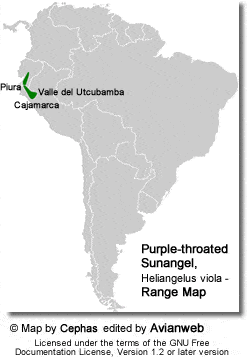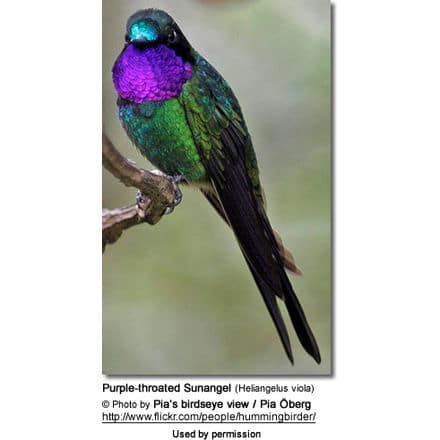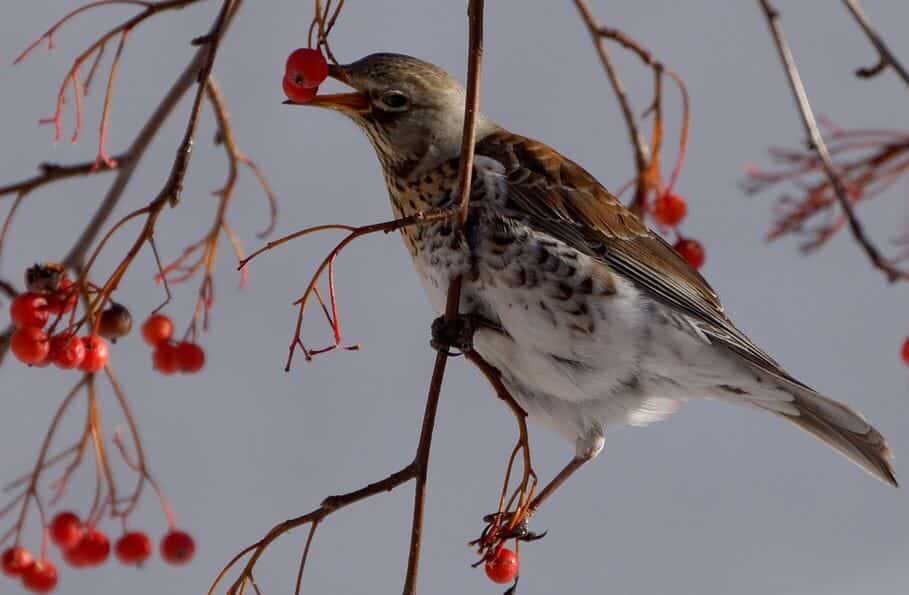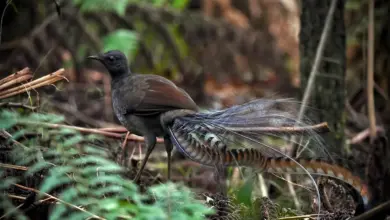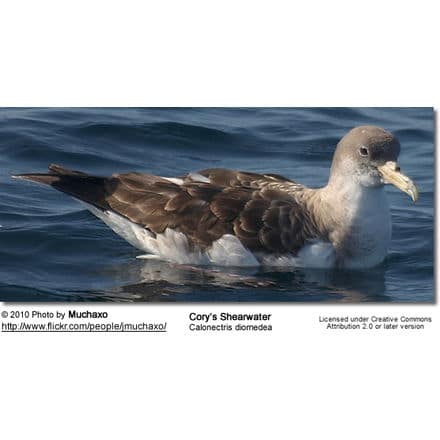Purple-throated Sunangel
The Purple-throated Sunangels (Heliangelus viola) are also known as Viola Sunangels.
These mid-sized South American hummingbirds have a wide range in the Andean highlands of Ecuador and Peru, where they are one of the more common hummingbirds.
These striking birds have adapted well to living in human settlements and are a frequently seen hummingbird species across much of their range.
Distribution / Habitat
Purple-throated Sunangels occur naturally on the western slope of the Andes in southern Ecuador and northern Peru in Cajamarca and Piura, as well as in the valleys of Cajamarca and Utcubamba.
They are mostly found along the forest borders as well as in cloud forests, alder (Alnus) woodlands, adjacent second growth, thickets, and shrubby areas – at elevations from 5,900 – 10,500 feet ( 1,800 – 3,200 meters).
Males are often seen out on open perches from which they defend their territories.
Description
Purple-throated Sunangels measure about 4.9 – 5.1 inches (12.5 – 13 cm) in length, including the long, deeply-forked tail.
The plumage is mostly glossy dark green.
Males have flashy violet gorgets (throat patches), which may look darker in poor light conditions or when viewed at certain angles. Below the throat patch is a band of blue iridescent feathers that are not always apparent.
These throat patches are highly variable in females, where they could be subject to seasonal variations, sometimes appearing whitish rather than purple.
Males and females look alike, except females have shorter tails and different gorget (throat patch) details, which are sometimes smaller, occasionally whitish in color, or variable.
Similar Species:
The Royal Sunangel is smaller in size but has similar plumage characteristics. The ranges of these species are not known to overlap; therefore confusion is unlikely.
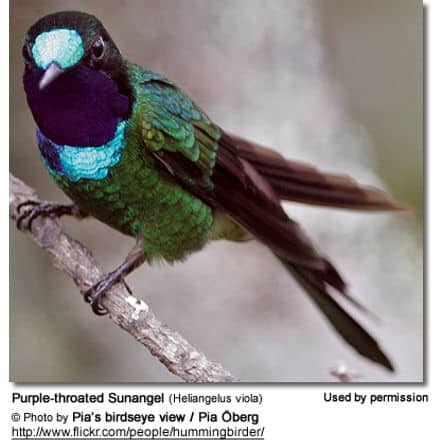
Diet / Feeding
The Purple-throated Sunangels primarily forage in the midstory of the forest for nectar taken from a variety of brightly colored, scented small flowers of trees, herbs, shrubs, and epiphytes. They favor flowers with the highest sugar content (often red-colored and tubular-shaped) and seek out, and aggressively protect, those areas containing flowers with high-energy nectar. In some parts of Ecuador, they appear to rely on flowers of Eucalyptus trees. They use their long, extendible, straw-like tongues to retrieve the nectar while hovering with their tails cocked upward as they are licking at the nectar up to 13 times per second. Sometimes they may be seen hanging on the flower while feeding.
Many native and cultivated plants on whose flowers these birds feed heavily rely on them for pollination. The mostly tubular-shaped flowers exclude most bees and butterflies from feeding on them and, subsequently, from pollinating the plants.
They may also visit local hummingbird feeders for some sugar water, or drink out of bird baths or water fountains where they will either hover and sip water as it runs over the edge; or they will perch on the edge and drink – like all the other birds; however, they only remain still for a short moment.
They also take some small spiders and insects – important sources of protein particularly needed during the breeding season to ensure the proper development of their young. Insects are often caught in flight (hawking); snatched off leaves or branches, or taken from spider webs. A nesting female can capture up to 2,000 insects a day.
Males establish feeding territories, where they aggressively chase away other males as well as large insects – such as bumblebees and hawk moths – that want to feed in their territory. They use aerial flights and intimidating displays to defend their territories.
Breeding / Nesting
Hummingbirds are solitary in all aspects of life other than breeding, and the male’s only involvement in the reproductive process is the actual mating with the female. They neither live nor migrate in flocks, and there is no pair bond for this species. Males court females by flying in a U-shaped pattern in front of them. He will separate from the female immediately after copulation. One male may mate with several females. In all likelihood, the female will also mate with several males. The males do not participate in choosing the nest location, building the nest, or raising the chicks.
The female is responsible for building the cup-shaped nest out of plant fibers woven together and green moss on the outside for camouflage in a protected location in a shrub, bush, or tree. She lines the nest with soft plant fibers, animal hair, and feathers down, and strengthens the structure with spider webbing and other sticky material, giving it an elastic quality to allow it to stretch to double its size as the chicks grow and need more room. The nest is typically found on a low, skinny horizontal branch.
The average clutch consists of two to three white eggs, which she incubates alone, while the male defends his territory and the flowers he feeds on. The young are born blind, immobile, and without any down.
The female alone protects and feeds the chicks with regurgitated food (mostly partially digested insects since nectar is an insufficient source of protein for the growing chicks). The female pushes the food down the chicks’ throats with her long bill directly into their stomachs.
As is the case with other hummingbird species, the chicks are brooded only the first week or two and are left alone even on cooler nights after about 12 days – probably due to the small nest size. The chicks leave the nest when they are about 20 days old.
Calls / Vocalizations / Sounds
Their vocalizations are described as a series of scratchy, electric, wheezy phrases; or rich popping chatters.
Alternate (Global) Names
Chinese: ????? … Czech: kolib?ík eukalyptový, Kolibrík fialový … Danish: Purpurstrubet Solalf … Dutch: Violetkeelzonnekolibrie, Violetkeel-zonnekolibrie … German: Purpurkehl-Sonnennymphe, Violettkehlnymphe, Violettkehl-Sonnennymphe … Finnish: Purppuraenkelikolibri … French: Héliange violette … Italian: Angelo del sole gola purpurea, Eliangelo golaviola … Japanese: fujinodotenshihachidori … Norwegian: Purpurstrupesolengel … Polish: lordzik widlosterny, lordzik wid?osterny … Russian: ?????????????? ????? … Slovak: nymfárik záhradný … Spanish: Angel del Sol de Garganta Púrpura, Colibrí Violeta … Swedish: Purpurstrupig solängel
Hummingbird Resources
- Hummingbird Information
- Hummingbird Amazing Facts
- Attracting Hummingbirds to Your Garden
- Hummingbird Species
- Feeding Hummingbirds

